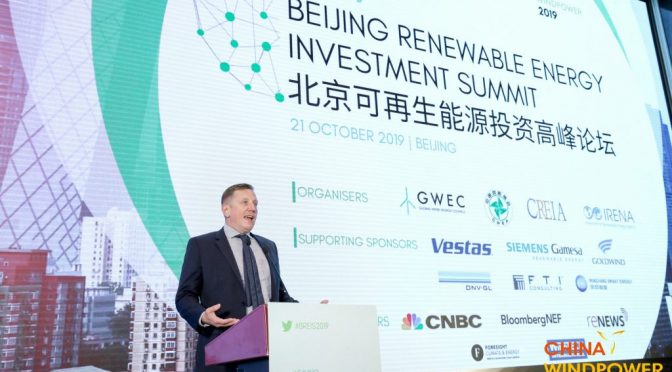Open trade and investment environments are vital to carry out necessary energy transition cost effectively.
Annual investment in renewables must increase by fivefold to achieve 1.5 C pathway according to IPCC.
Trade conflicts and protectionism risk increasing the cost of renewables after a global push which has made wind and solar energy more competitive than fossil fuels and nuclear. Protectionist policies could potentially add up to 20 per cent on wind turbine supply chain costs.
GWEC calls on governments to work together to ensure open investment environments and refrain from creating new tariff barriers for the wind energy industry which threaten the energy transition.
The Global Wind Energy Council (GWEC), which represents the leading companies in the wind energy industry, is calling on governments across the world to refrain from introducing trade barriers which impact wind turbine equipment and to ensure an open investment climate for companies financing the global energy transition.
According to the IPCC, investment in renewables needs to increase to USD$2.4tn per year by 2050 if the world is to have a hope of heading off the dangerous effects of climate change. And yet, GWEC points out that a number of countries have introduced new trade barriers on commodities and components affecting the wind industry as well as introduced new screen mechanisms among other measures to restrict global investment in the renewables sector, posing as a major obstacle to achieve our climate goals.
“As global warming continues to break records putting the fate of our planet at risk, the world faces possibly its greatest historic challenge so far, and there is unprecedented public and political support for taking action,” says Ben Backwell, CEO of the Global Wind Energy Council (GWEC) “It is vitally important for countries, governments, companies and communities to be working together to scale up the deployment of technologies like wind energy that we need to decarbonise. And yet, every week we are hearing talk about new trade barriers and new restrictions on badly needed investments being introduced. Whether we are in Beijing, Brussels or Washington, we all face a common problem and need to cooperate to replace fossil fuels with renewables as fast as possible and at the lowest cost”.
GWEC highlights that onshore wind energy has reduced its levelised cost of energy (LCOE) by 45 per cent over the last decade, making it one of the most competitive source of energy on the planet. However, tariffs on key commodities and components could add up to 20 per cent to wind turbine supply chain costs in some cases, which could dramatically slow down the energy transition at a time when we need to be accelerating.
New screening mechanisms introduced by countries and trade barriers have also led to a series of much needed planned investments in clean energy being cancelled, which is not an option when we need to increase annual investment in renewables five-fold in order to meet the targets set out by the IPCC.
Morten Dyrholm, Senior Vice President at Vestas commented, “In today’s wind market, it’s key to invest in global reach and a global supply chain. As market growth fluctuates and there’s a strong push for localisation, having supply chain flexibility is key, but trade wars and barriers do real damage to businesses by inflating prices. It makes a global supply chain less global, making renewables less competitive. At Vestas, it’s clear that trade wars and barriers do not help spur localisation, and a healthy competition which is needed to attract investments”.
“With renewables, it’s possible to achieve a climate-safe future,” said Francesco La Camera, Director-General of the International Renewable Energy Agency (IRENA). “Low-cost renewable energy technologies like wind power are readily-available today, representing the most effective and immediate solution for reducing carbon emissions. Unlocking global wind energy potential will be particularly important. In fact, wind energy could be the largest single source of power generation by mid-century. But scaling up investments will be key. Our new report “Future of Wind” estimates that on average, global annual investment in wind would have to increase from around USD 85 billion today to over USD 300 billion in 2050. This would not only enable us to meet climate goals, but it would also boost economic growth and create jobs, thereby accelerating sustainable development.”
GWEC and the International Renewable Energy Agency (IRENA), along with the Chinese Wind Energy Association and the Chinese Renewable Energy Association, have organised the first Beijing Renewable Energy Investment Summit (BREIS).


